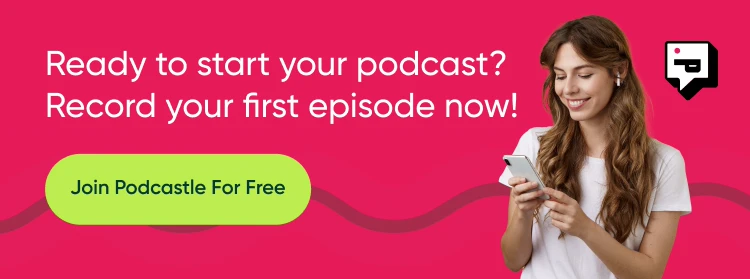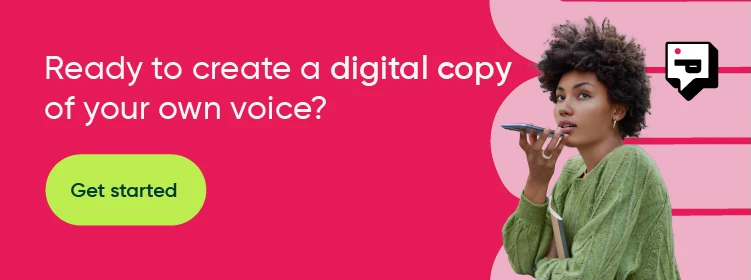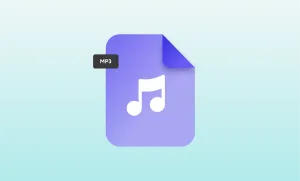Blow out your favorite candle, put your favorite music on, and give yourself some time to sit down with your thoughts and figure it all out—that’s how you start journaling.
Of course, you can skip the candle and the music. What really matters is finding a couple of minutes (or maybe even more) during your day to have a little pause and untangle your mind.
Journaling is proven to have a range of mental health benefits, as it is a great way to figure out what fears and concerns you’re dealing with at the moment. But more than just the mental health benefits, journaling can help you become more creative and even fuel your self-growth.
By writing (or speaking) your thoughts out loud, you spark new ideas and make connections you wouldn’t have noticed otherwise.
The only question is — how do you start a journal?
In this blog post, we’ll tell you all about starting a journal and the different ways you can make it uniquely yours.
Table of Contents
– Different types of journaling
– Why you should journal as often as possible
– How to start a journal: step-by-step guide
– Why self-reflection is important
– Tools and resources to make journaling easy
– Journaling tips to keep you inspired
Different Types of Journaling
When it comes to starting a journal, the beauty lies in the variety of formats available. Each type offers a unique experience and benefits, making it easy to find one that resonates with you.
Let’s explore some popular journaling formats to help you discover your perfect match!
1) Journal Writing: The Classic Pen and Paper
There’s something timeless about journal writing with pen and paper. The tactile experience of putting pen to page creates a deeper connection to your thoughts and feelings. As you write down your musings, you may find that the simple act of writing can be both meditative and grounding. It’s a great way to escape the internet and embrace a slower pace.
One of the unique benefits of a writing journal is the freedom it provides for personal expression. You can doodle, sketch, or even paste photos and mementos without any limitations. Plus, there’s a certain charm to flipping through the pages and reliving your thoughts in their original form.
Whether you need journaling to remember your daily moments or explore your dreams, a traditional journal can be a great keepsake that reflects your journey.
2) Digital Journals: Using Apps and Software
Although the traditional pen-and-paper format is great, not all of us carry pen and paper with us everywhere we go. For some people, thoughts come unexpectedly, and it’s much easier to put them down right away using whatever they have at hand, and in most cases, it’s a phone or a laptop.
We’ve all been there—opening the Notes app and writing down a thought or complaining about what just happened so that we can get it out instantly. Now, guess what? It’s micro-journaling right there!
If you’re one of those people and you prefer a more modern approach, digital journals can be your best pick. Not only is it more convenient, but it also helps you be creative in different formats, as you can insert videos or pictures into your entries. Want to remember that stunning sunset? Snap a pic and attach it to your entry! By incorporating multimedia elements, you can express yourself in a more multifaceted and make the narrative of your life more dynamic.
3) Audio Journals: Mini Self-Podcasts
If the phrase “less talking, more doing” never resonated with you, and you’d rather just talk it all out, then audio journaling might be exactly what you’re looking for.
Think of them as mini self-podcasts where you can record your thoughts, feelings, and experiences whenever you want. Plus, you won’t have to burden your friends with your rants on the phone daily, either!
Audio journaling is also great because you can do it whenever you want. You could be commuting, cooking, or just relaxing at home. In any case, grabbing your phone and talking into a voice memo can feel freeing.
With audio journaling, you can capture your thoughts in real-time, reflecting on your day as it happens. There’s no pressure to get it right—just press record and let your ideas flow.
This format of starting a journal encourages honesty and authenticity, making it a great choice for those who want to explore their feelings more deeply. Plus, you might even find yourself picking up some podcasting skills along the way!
4) Video Journals: Making It a Vlog
Video journaling is a great format to explore for those who prefer to express themselves visually.
You can record your daily thoughts, share experiences, or even document your growth over time, all while adding a visual layer to your entries.
One of the best things about video journals is how they bring memories to life. You get to see your facial expressions, hear the tone in your voice, and relive experiences more vividly. It’s a way of capturing more than just words on a page—it’s a snapshot of who you were at that moment.
If you’re someone who’s interested in content creation or wants to improve your on-camera confidence, this is a great way to practice. And who knows, what might start as some video journal entries, could end in a branded personal vlog where you share your journey or experiences with a wider audience!
PS, if you want to be more confident when staring down the camera, we've got the video just for you:
Why You Should Journal As Often as Possible
Journaling can serve different purposes depending on what you’re looking to achieve. From boosting mental health to tracking fitness goals, there’s a journaling style out there for everyone.
1) Personal Journal: Journaling for Mental Health
Using a personal journal for self-reflection can do wonders for your mental well-being. Writing down your thoughts and feelings helps you process emotions, reduce stress, and gain more clarity. Journaling for mental health is all about letting your mind breathe and finding moments of calm. It’s a judgment-free zone where you can be completely honest with yourself, even on those tough days.
2) Fitness Journal
A fitness journal helps you track your workouts, meals, and progress over time. It keeps you motivated and makes it easier to set realistic goals, whether you're aiming for strength, endurance, or overall wellness. Documenting your journey can highlight patterns and keep you accountable, making your health and fitness goals feel more achievable day by day.
3) Career Journal
If you’re focused on professional growth, a career journal is a great tool. It’s a space to note down career achievements, challenges, and future aspirations. Keeping track of projects and milestones not only keeps you motivated but also provides a handy record for performance reviews or when updating your resume. Plus, it can help you reflect on your career path and strategize your next steps.
4) Creative Journal
For those with a passion for art, writing, or any kind of creative work, a creative journal can be a space to capture all your ideas. Doodle, sketch, or write down random inspirations—it’s all about sparking creativity. It’s a place to experiment without any pressure or expectation, so you can explore your imagination and keep your creative juices flowing.
5) Gratitude Journal
A gratitude journal is about focusing on the positives. Each day, jot down a few things you’re thankful for, big or small. This simple habit can shift your mindset and help you appreciate the little joys in life. It’s an easy way to practice mindfulness and bring more happiness into your daily routine.
How to Start a Journal: Your Step-by-Step Guide to Capture Your Life
Starting a journal might seem a bit overwhelming at first, but it doesn’t have to be. The key is to keep things simple and find a rhythm that works for you.
Here are some easy steps to get you going:
1) Set Your Intentions
Before you even put pen to paper or type a single word, think about why you want to start journaling. Is it to clear your mind, track your goals, or maybe just have a private space to vent? Knowing your purpose will make starting a journal feel more meaningful and less like a chore.
2) Pick the Right Format
We’ve talked about different types of journaling, so now it’s time to choose one. Whether it’s a traditional notebook, a digital app, or even an audio format, pick what feels most natural and easy for you. Remember, it’s about making it enjoyable and convenient. If you find writing tedious, consider starting with voice notes instead.
3) Make It a Habit
Consistency is what turns journaling from a random activity into a powerful tool for self-reflection. Set aside a specific time of day, whether it’s right after you wake up or before bed. Starting a habit can feel tough, but even five minutes a day makes a difference.
4) Use Prompts If You’re Stuck
Not sure what to write in a journal? Prompts can be a lifesaver, especially if you’re new to this. There’s no shame in needing a nudge to get started. Here are some easy ones to try: “What made me smile today?” or “What’s something I’m grateful for?” You can also use generative AI tools like ChatGPT to give you custom prompts based on your goals. Tools like these can help you brainstorm meaningful questions or even suggest a structure for your entries.
5) Keep It Simple
Don’t put pressure on yourself to write perfectly or produce something profound every time. Some days, your entries might be a stream of random thoughts, and that’s completely fine. If you’re wondering how to start a journal entry, just begin with whatever comes to mind. Maybe it’s something that’s been bothering you or a recap of a moment you loved. There are no rules, just your own thoughts.
6) Create a Dedicated Space
Having a special spot for your journaling practice can set the mood and make the experience more enjoyable. It could be your favorite chair by the window or a cozy corner with a candle nearby. Having a designated space helps signal to your brain that it’s time to slow down and reflect. For digital journaling, find a comfortable spot and try using noise-canceling headphones to block out distractions.
7) Experiment and Evolve
Don’t be afraid to change your journaling routine. Maybe one week, you focus on gratitude entries, and the next, you try free-writing your thoughts. It’s okay if your style evolves. As long as you’re showing up, you’re doing it right. If writing every day feels like too much, start with weekly check-ins and build from there. The idea is to keep it enjoyable and sustainable.
8) Reflect and Adjust
Every now and then, take a look back at your old entries. It’s a great way to see how much you’ve grown or to remind yourself of moments you might’ve forgotten. Journaling can act like a time capsule, capturing who you were and how far you’ve come. If something in your process isn’t working—maybe you’re always skipping your evening journal session—adjust it. Journaling should be adaptable to your life, not the other way around.
9) Make It Your Own
Remember, there’s no “right” way to journal. Add in what you need to make it feel personal. This could mean decorating your journal with doodles or inserting voice clips into your digital entries. The more you make it feel like yours, the more likely you are to stick with it.
Journaling for beginners doesn’t have to be complicated. It’s all about finding what works for you, embracing the messiness of your thoughts, and, most importantly, enjoying the process.
Why Self-Reflection is Important
Journaling is most powerful when you allow yourself to be honest and open. Let go of any self-censorship and write as if no one else will read it—because it’s your space. Don’t worry about grammar, spelling, or how "good" your entry sounds. Journaling isn’t about creating a masterpiece; it’s about capturing your thoughts, feelings, and experiences as they are. The more authentic you are, the more you’ll gain from each entry, so don’t hold back. Whether it’s messy, emotional, or imperfect, let it all flow.
And remember, you don’t have to limit yourself to one method. You can combine styles and formats to keep things interesting. Love the feel of a pen on paper? Add printed photos, doodles, or tickets from memorable events. If you want to keep it digital, you can mix it up with audio or video entries in apps like Notion. The beauty of journaling is that it’s yours to shape however you like—whether that’s a handwritten notebook, a folder of voice memos, or a digital scrapbook.
Tools and Resources to Make Journaling Easy
Finding the right tools for journaling can make it easier to keep up with the habit and personalize it to your lifestyle. From digital journal apps to tools for audio and video journaling, you have plenty of options to explore. Here’s a roundup of some popular tools and how they can help:
1) Podcastle
For both audio and video journaling, Podcastle is a great tool that lets you record and edit your entries with ease. As an audio journal, Podcastle works like a mini-podcast setup, letting you record thoughts, stories, and reflections with professional-quality sound. For video journals, you can use its simple video editing features to capture visual memories or document your day. With Podcastle, you’ll find both flexibility and polish, perfect for adding a new dimension to your journaling practice.
2) Evernote
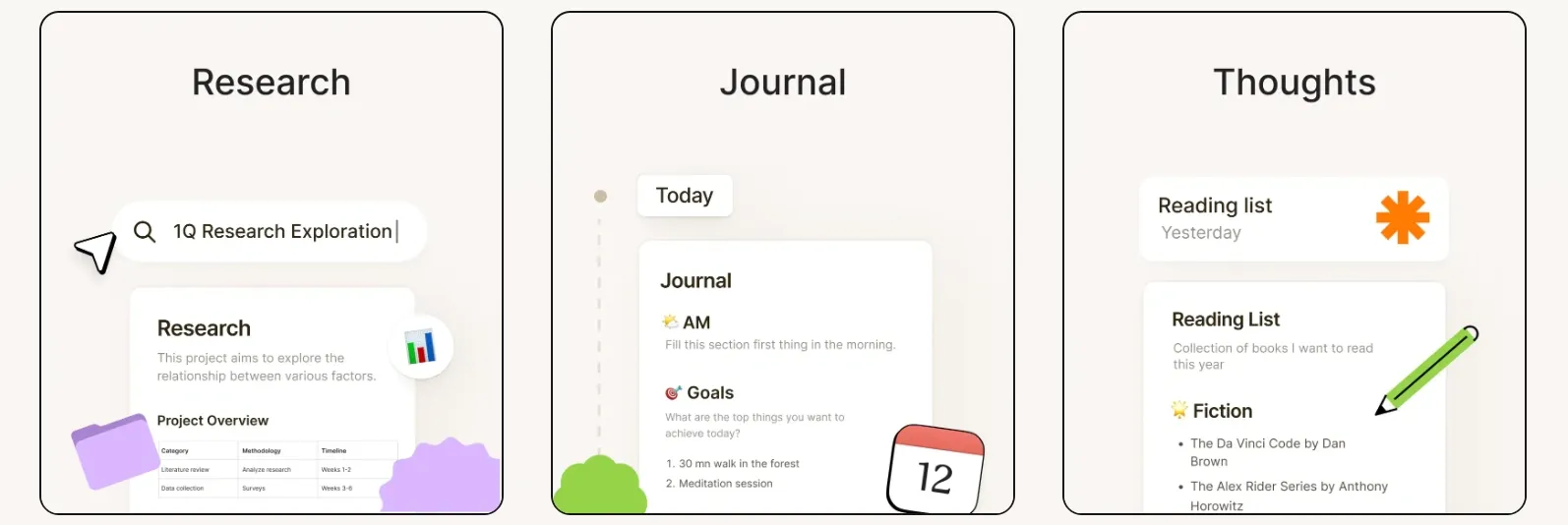
Ideal for digital journal writing, Evernote offers an organized notebook structure with customizable tags and integration across devices. Add images, audio, and web clippings to keep all your thoughts in one easy-to-navigate space.
3) Notion
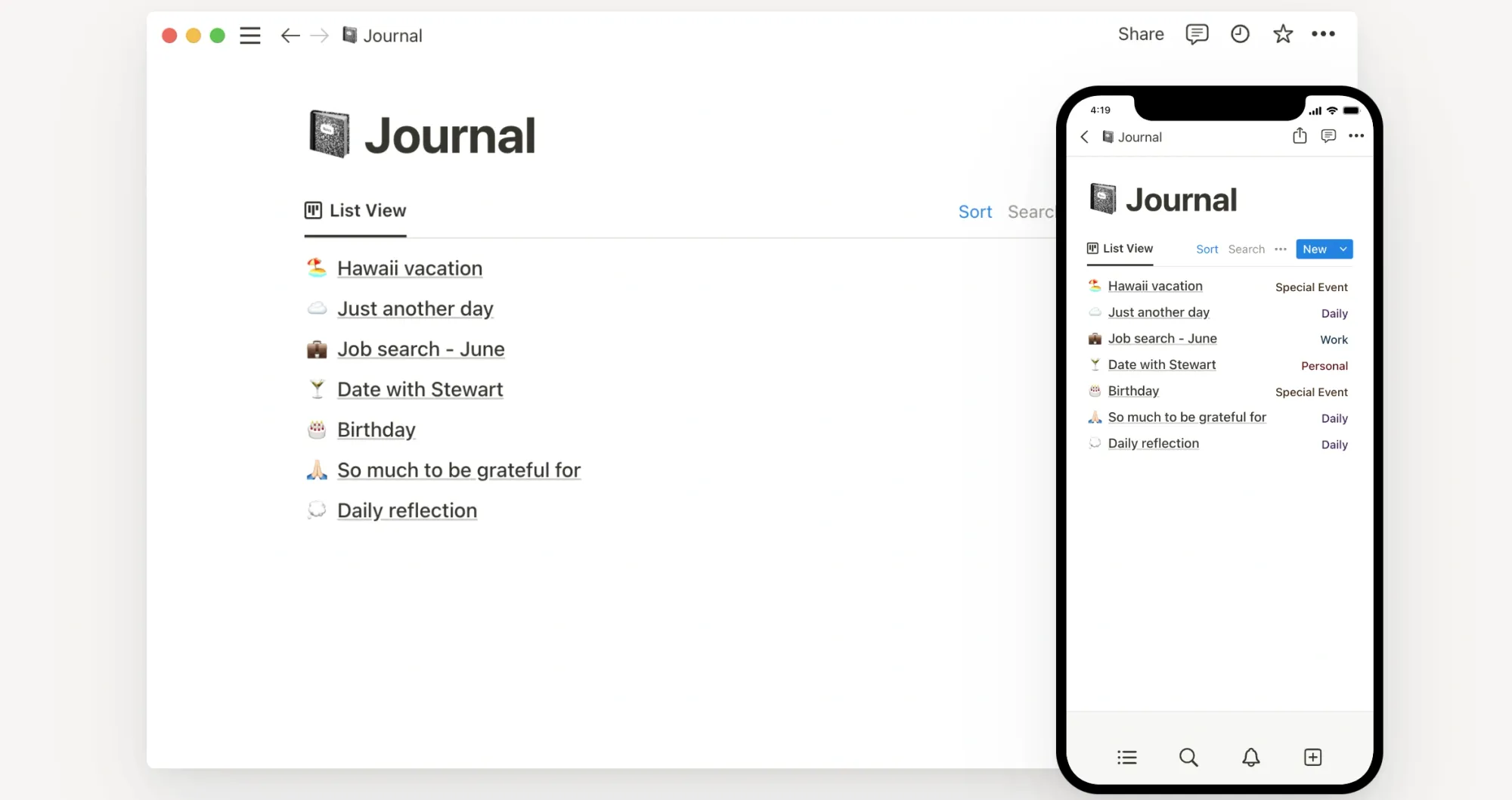
Known for its flexible workspace, Notion is great if you prefer writing journal in a more structured way. You can set up unique templates for daily reflections, mood tracking, or goals. With Notion, embedding images, videos, and links is straightforward, letting you blend creativity with your journaling routine.
4) Google Keep
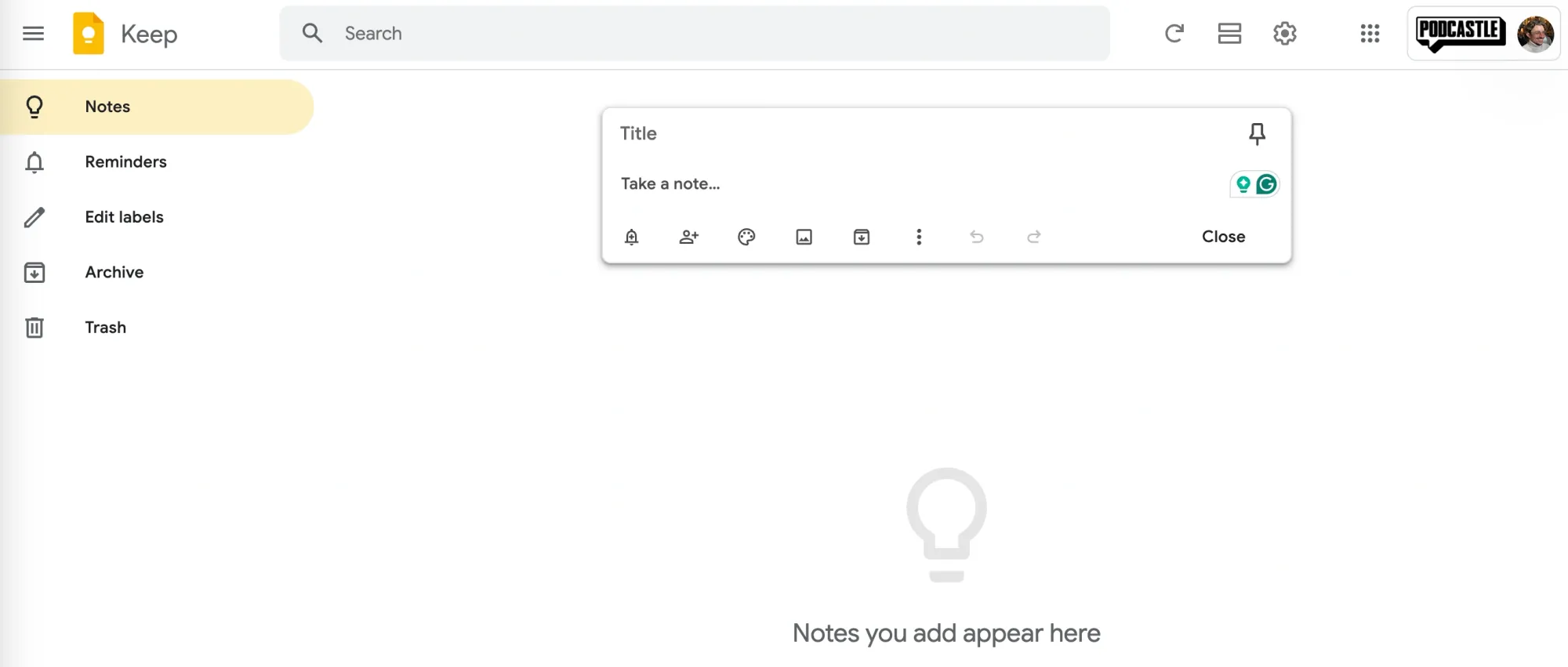
For simplicity and quick access, Google Keep is a great choice. It offers color-coded notes, voice recordings, and image uploads for capturing ideas on the go, all while syncing across your Google account.
5) Day One
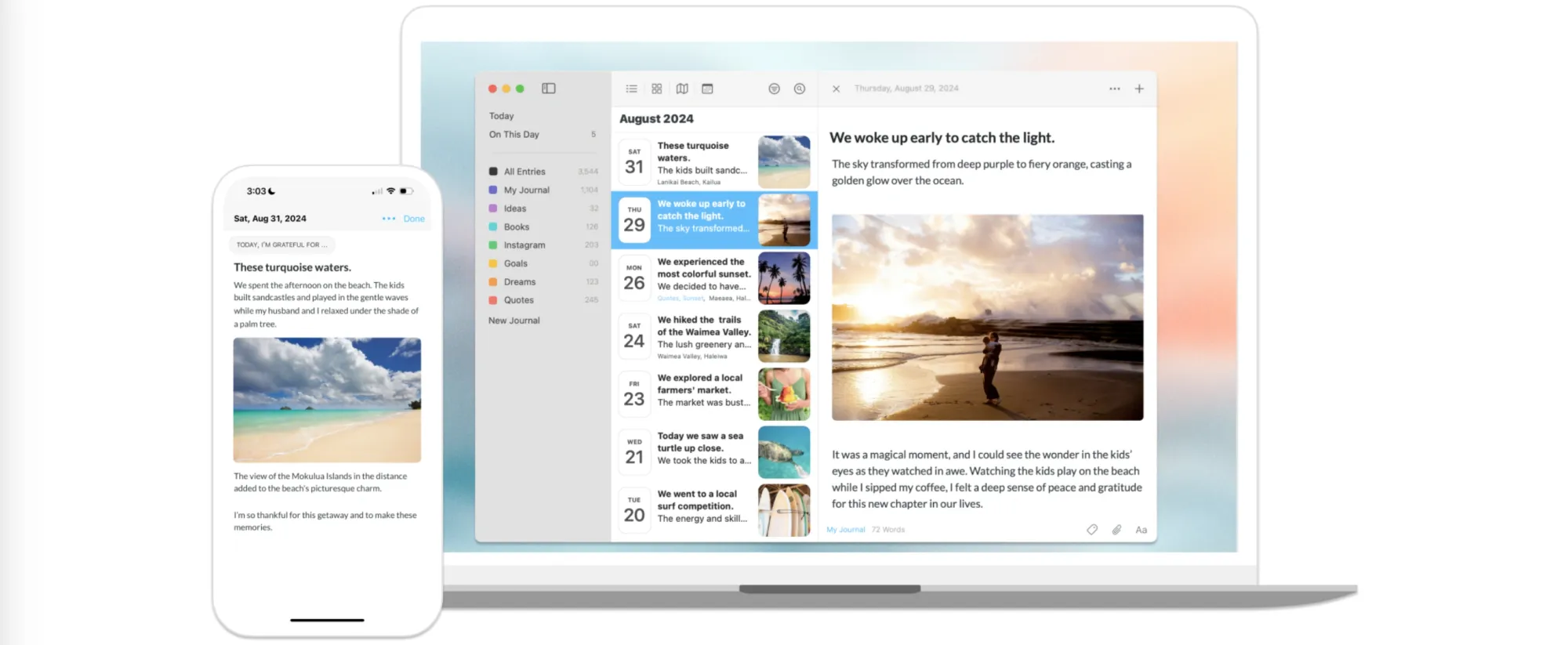
A dedicated journaling app, Day One features location tagging, photo attachments, and calendar views, making it perfect for keeping a personal journal full of memories. Its clean interface and reminders make it easy to stay consistent.
6) Voice Memos (iOS) / Easy Voice Recorder (Android)
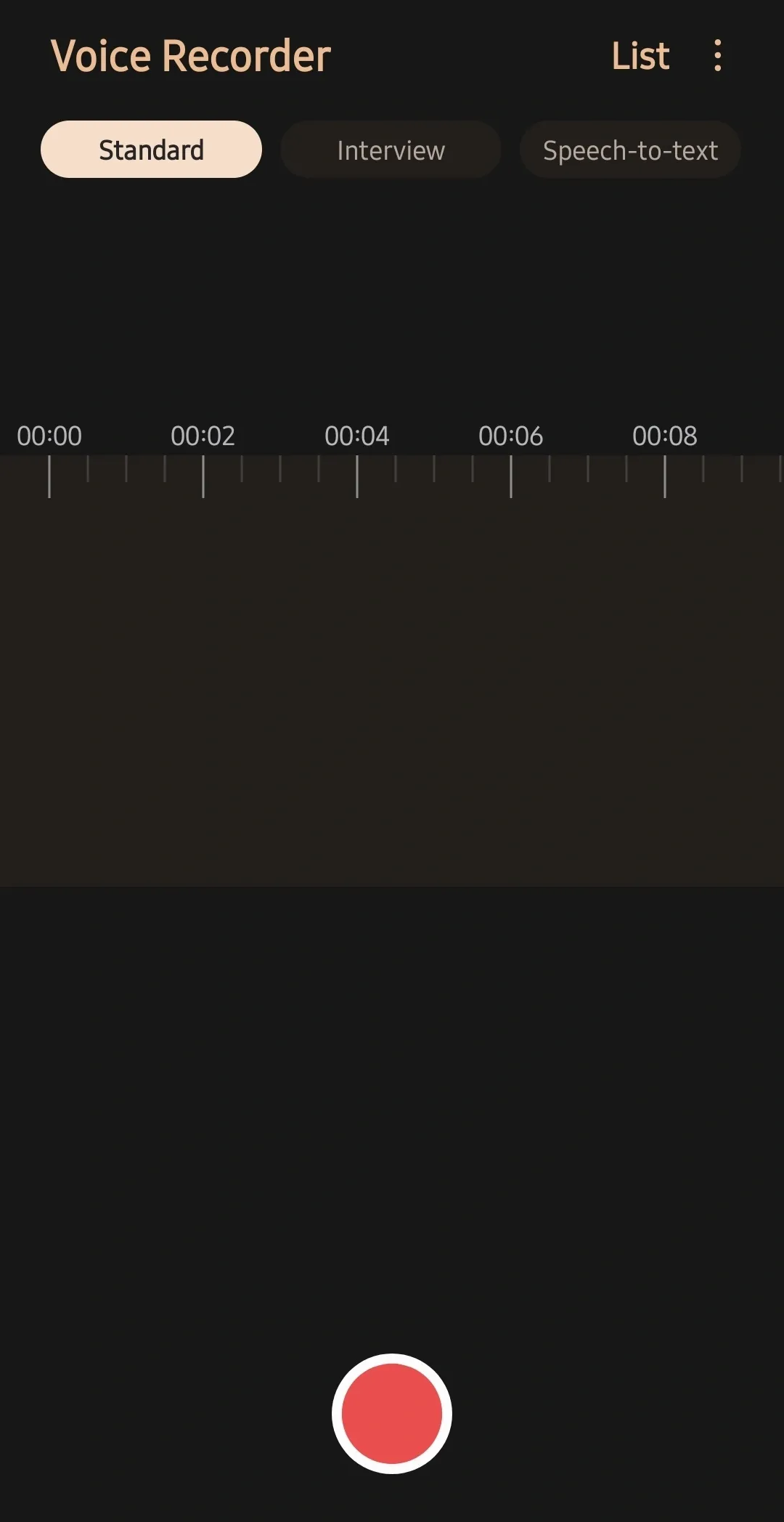
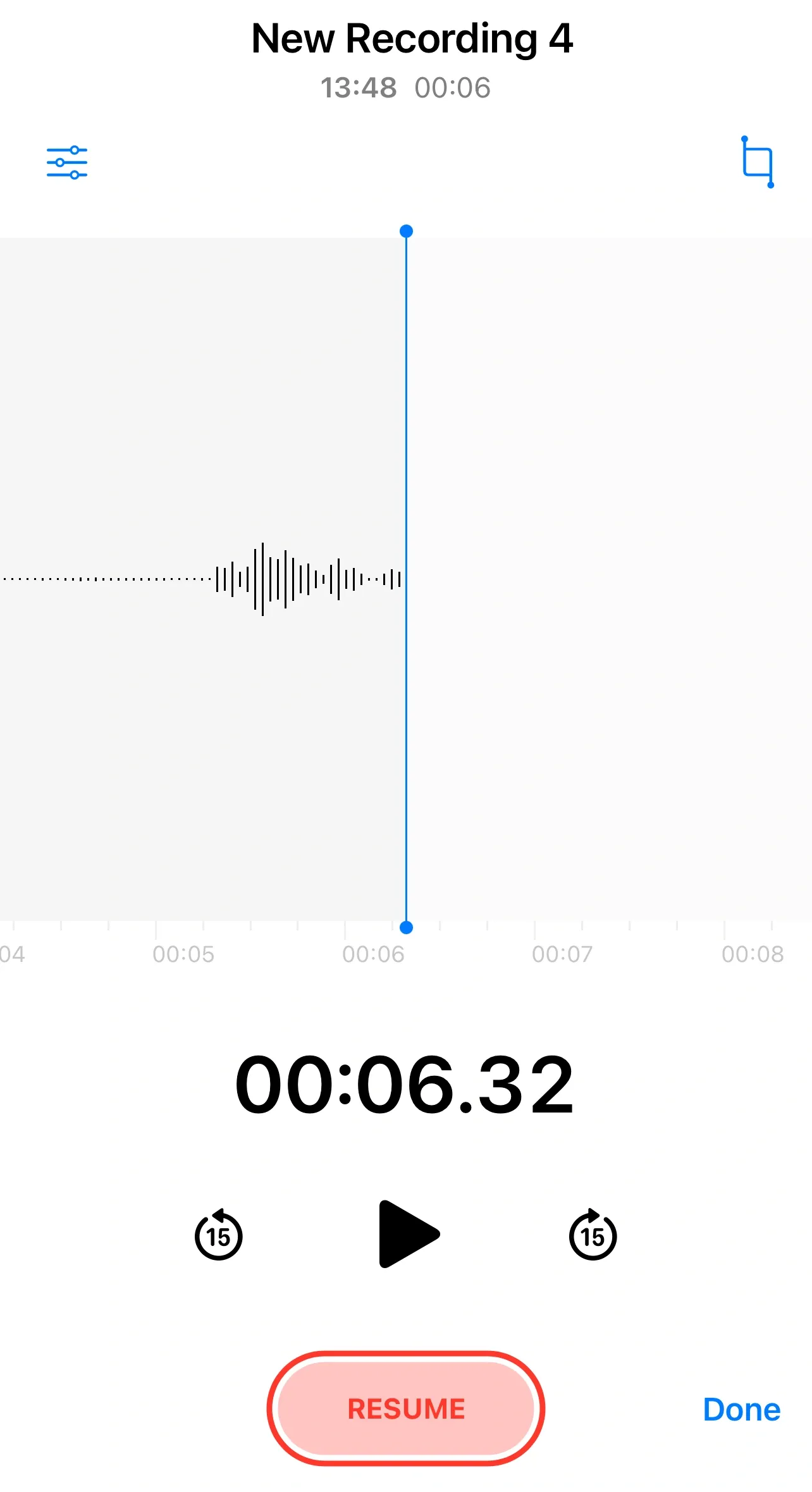
These are the built-in apps on your phone and they are straightforward tools for audio journaling. Just press record, talk, and save—perfect for spontaneous entries on the go.
7) YouTube (Private Videos) or Google Photos
For video journaling, private YouTube videos or Google Photos work well as a free way to record entries visually while keeping them secure.
Journaling Tips to Keep You Inspired
Sometimes, the hardest part of journaling isn’t starting. It’s sticking with it.
We all know the motivation to journal can come in waves—some days, you’re overflowing with thoughts, while others, you’re staring at a blank page.
Still, consistency is key if you want to see the full benefits. So here are a few realistic strategies to help you make journaling a regular, enjoyable part of your life, even when you’re low on ideas or short on time.
1) Set Small, Realistic Goals
Don’t worry about filling pages or writing a novel every day—start small. Commit to jotting down a couple of sentences or reflecting on one moment each day. These smaller goals make journaling feel manageable, so you’re more likely to stick with it. And if you want to expand to longer entries later, go for it! Starting with bite-sized entries helps build a steady habit without feeling like a chore.
2) Try a Weekly Recap Instead of Daily Entries
If daily journaling feels overwhelming, try a weekly recap. Spend a few minutes every Sunday jotting down highlights, challenges, or big moments from the week. This approach takes off the pressure of daily entries but still helps you track your experiences and progress over time. Plus, you’ll start to see patterns and themes in your life when you look back, which is super rewarding.
3) Set an Intention for Each Entry
Before you start writing, set a specific intention or theme for your entry. It could be gratitude, reflection, problem-solving, or creative brainstorming. This simple step not only gives structure to your entry but also helps you tap into what’s on your mind and focus on what matters most at that moment. Plus, it adds variety, so your journaling doesn’t start feeling monotonous.
4) Make Journaling Part of Your Routine
We’ve already talked about how important it is to make journaling a habit. Incorporating journaling into your daily routine helps make it second nature. You can journal with your morning coffee or as a relaxing wind-down activity before bed. Set reminders on your phone or mark it on your calendar if you tend to forget. Soon, it will feel like a natural part of your day, something you look forward to rather than a task on your to-do list.
*Bonus Tips: Journaling Ideas for Beginners
Finally, if you’re absolutely new to journaling, we’ve also compiled a list of prompts and ideas to explore to make the beginning of the journey easier for you. These prompts are also perfect for sparking ideas when you’re stuck or want some direction in your writing.
– Write about three things you’re grateful for today.
– Describe a recent memory that made you smile.
– What’s something you’d like to achieve this month, and why?
– Jot down a list of small things that bring you joy.
– Reflect on a challenge you overcame recently.
– Describe your ideal day from morning to night.
– Write a letter to your future self five years from now.
– What are three things you love about yourself?
– If you could travel anywhere tomorrow, where would you go?
– Describe your favorite place to relax and why it’s meaningful to you.
Taking Journaling to the Next Level with Podcastle
If you’re looking to dive into audio or video journaling, Podcastle has tools that make the process easy and seamless.
With features for high-quality recording, editing, and even AI-enhanced sound, you can capture your thoughts whenever inspiration strikes—no special setup needed.
Whether you’re saving entries for yourself or sharing parts of your journey with others, Podcastle helps turn everyday reflections into polished, professional content.
It’s perfect for aspiring content creators who want to share their thoughts or document their growth in a way that feels both creative and authentic.

